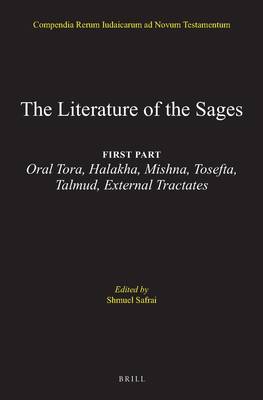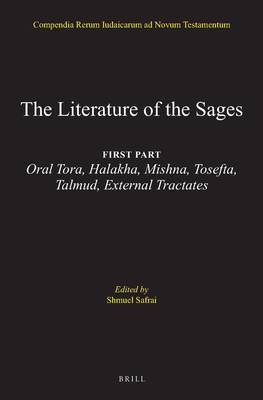
- Afhalen na 1 uur in een winkel met voorraad
- Gratis thuislevering in België vanaf € 30
- Ruim aanbod met 7 miljoen producten
- Afhalen na 1 uur in een winkel met voorraad
- Gratis thuislevering in België vanaf € 30
- Ruim aanbod met 7 miljoen producten
Zoeken
The Literature of the Jewish People in the Period of the Second Temple and the Talmud, Volume 3 the Literature of the Sages
First Part: Oral Tora, Halakha, Mishna, Tosefta, Talmud, External Tractates
€ 227,45
+ 454 punten
Omschrijving
The literary creation of the ancient Jewish teachers or Sages--also called rabbinic literature--consists of the teachings of thousands of Sages, many of them anonymous. For a long period, their teachings existed orally, which implied a great deal of flexibility in arrangement and form. Only gradually, as parts of the amorphous oral tradition became fixed, was the literature written down, a process that began in the third century CE and continued into the Middle Ages. Thus the documents of the rabbinic literature are the result of a remarkably long and complex process of creation and editing.
This volume gives a careful and succinct analysis both of the content and specific nature of the various documents, and of their textual and literary forms, paying special attention to the continuing discovery and publication of new textual material. The contributors are all engaged in academic teaching and research in Israel. Incorporating ground-breaking developments in research, their essays give a comprehensive presentation published here for the first time.
This volume gives a careful and succinct analysis both of the content and specific nature of the various documents, and of their textual and literary forms, paying special attention to the continuing discovery and publication of new textual material. The contributors are all engaged in academic teaching and research in Israel. Incorporating ground-breaking developments in research, their essays give a comprehensive presentation published here for the first time.
Specificaties
Betrokkenen
- Uitgeverij:
Inhoud
- Aantal bladzijden:
- 492
- Taal:
- Engels
- Reeks:
- Reeksnummer:
- nr. 2
Eigenschappen
- Productcode (EAN):
- 9789023222828
- Verschijningsdatum:
- 1/01/1987
- Uitvoering:
- Hardcover
- Formaat:
- Genaaid
- Afmetingen:
- 155 mm x 235 mm
- Gewicht:
- 889 g

Alleen bij Standaard Boekhandel
+ 454 punten op je klantenkaart van Standaard Boekhandel
Beoordelingen
We publiceren alleen reviews die voldoen aan de voorwaarden voor reviews. Bekijk onze voorwaarden voor reviews.










